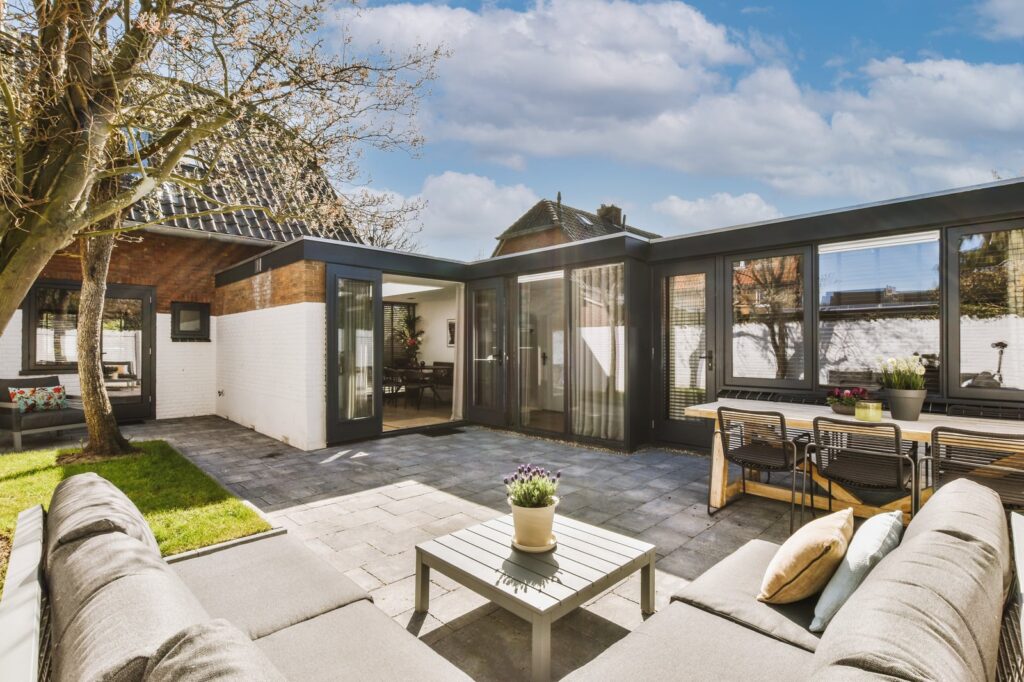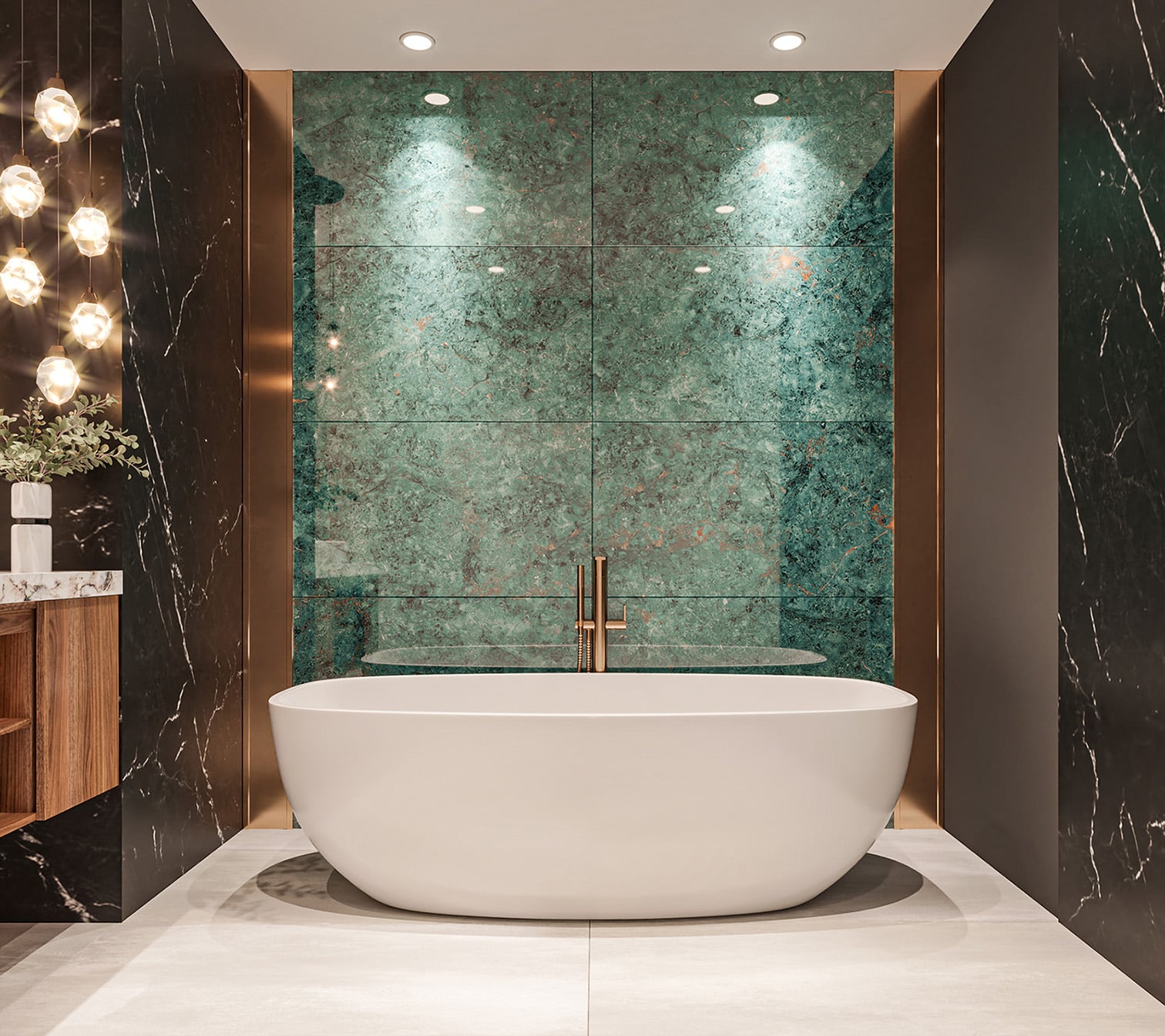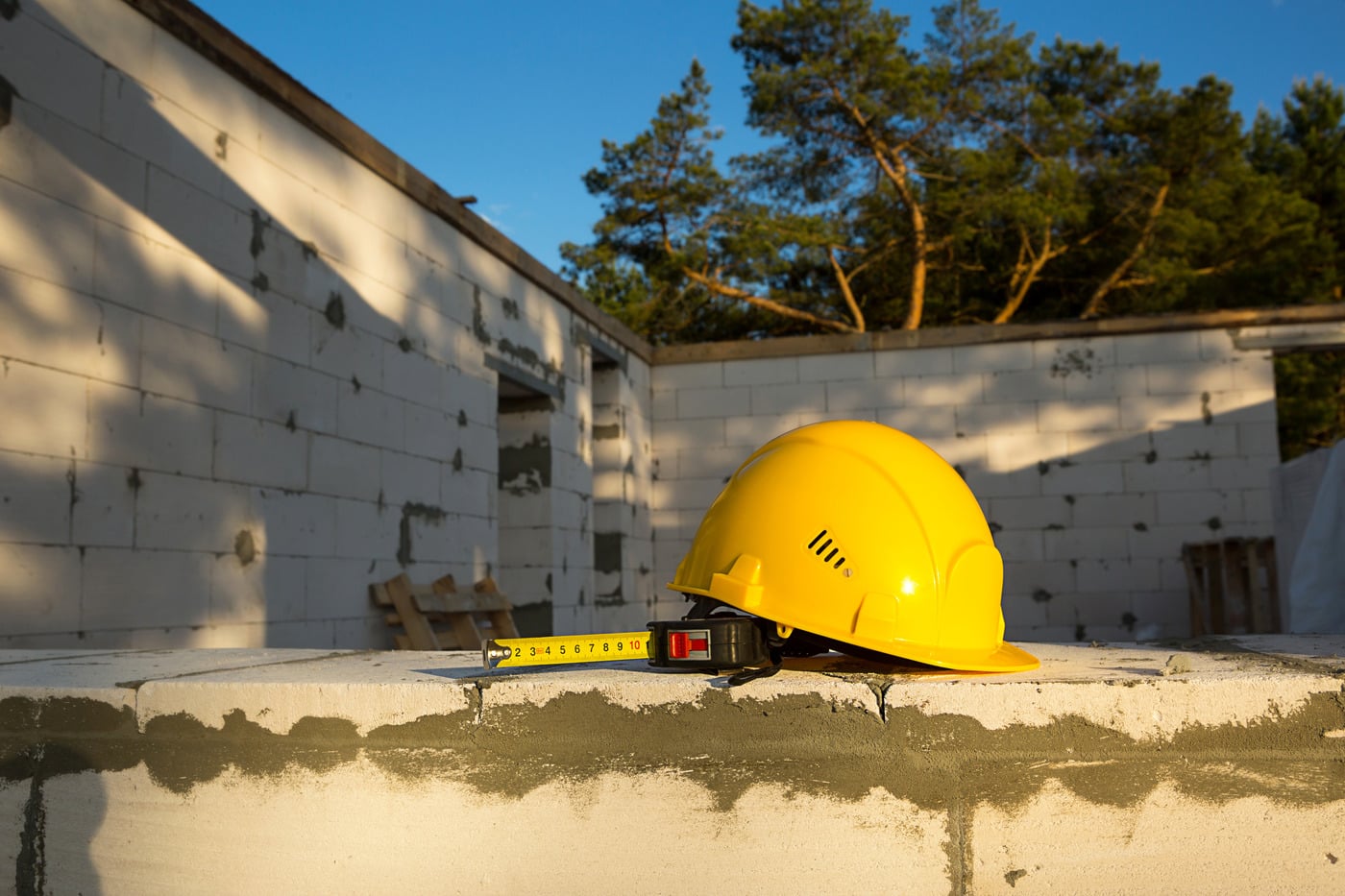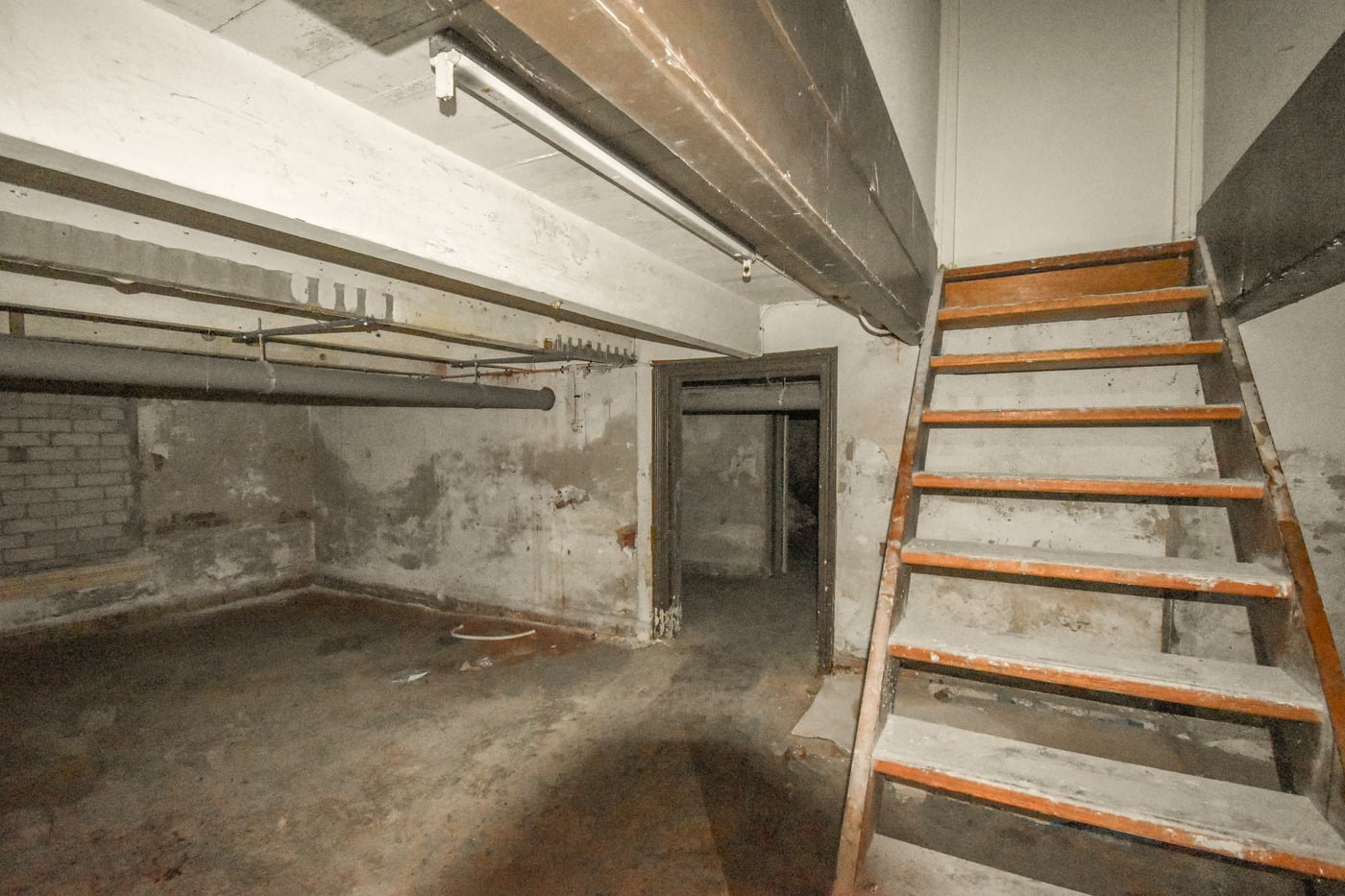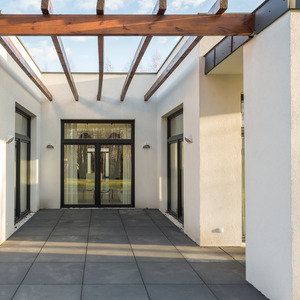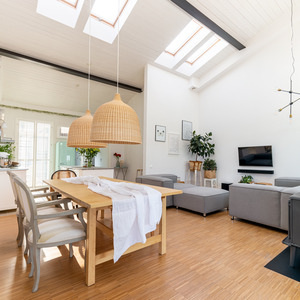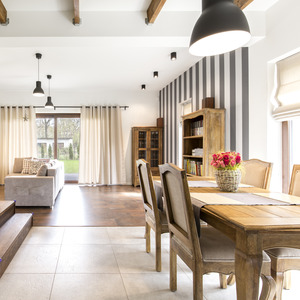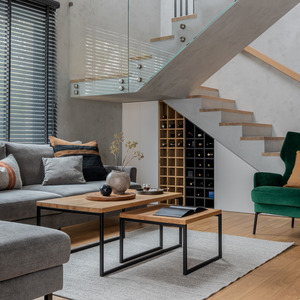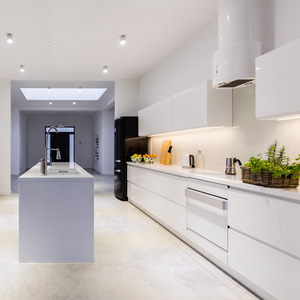Are you hoping to make your small house larger but are having trouble choosing where to start? A well-thought-out addition to your home can take the living space from overcrowded to cozy.
The perfect home extension is the one that uses every square foot to the fullest. Whether it be a bigger kitchen, an additional bedroom, or a bright living room, everything revolves around wise planning and design.
This detailed guide will guide you through the things you need to do to extend your small home, such as:
• Smart people-related space issues solving tricks that can be useful for any living area
• Proficient architectural representation for combining your living environment with the old structure
• Clear-cut measures for achieving well-lit interiors and easy movement
• Elaborations addressing both functionality and esthetics as connected to the house extension project
Get prepared to uncover your home’s latent capacity and have the extra space you have always desired, while not messing up the style and functionality.
| Feature | Benefit |
|---|---|
| Open-Plan Layouts | Maximizes space and creates a modern, airy feel. |
| Built-In Storage | Reduces clutter and utilizes every inch of your home efficiently. |
| Loft Conversions | Adds an extra bedroom or workspace without extending the property footprint. |
| Rear Extensions | Expands your living space while maintaining outdoor areas. |
| Natural Light Solutions | Enhances the perception of space and reduces energy costs. |
| Eco-Friendly Materials | Improves sustainability and increases property value. |
Key Takeaways:
- A well-designed home extension can dramatically change the way you live at home by optimizing the use of square footage and adjusting the functionality through smart spatial planning.
- Soft lines of the roof can be modified at the corners in a manner that prioritizes the direction the natural light comes from. You can also choose different finishes or colors for each corner for a more interesting and unique look.
- Besides the flexibility offered by solutions such as open plan layouts and multi-functional spaces, you may also opt for mobile or modular structures to make the extension as seamless and convenient as possible, especially in urban areas where space is at a premium.
- Good organization for improving your home extension must have a wholesome approach that considers both the present requirements and also the future utility of your home.
- A minor building project can be successful only if the chosen extension type fits neatly with the existing space and at the same time, it is beneficial to your property.
Technical Examination Of The Residential Property
Achieving A Comprehensive Revolution
Make no mistake, the first thing to do before you take the initiative to go on and build an extension is to have an overall understanding and to the point, scrutinize the potential of your property. Initially, analyze your space and look for all potential obstacles that you may come across while your extension is being constructed such as the narrowness of the trench, washing line, or neighbor’s house.
Grasp the moment to reflect on how the sun falls on the land and how it is distributed throughout the day. These insights will enable you to do a good job in deciding on the types of windows, the position they will be placed, and the whole design of the house. Moreover, ascertain whether there are such issues as a SINC (site of importance for nature conservation) occurrence on your land or the land in question being part of the NATURA network.
Local Policies and Regulatory Guidelines
To build and modify residential properties, there are certain laws and regulations that make up the framework one should not avoid. Get started with making inquiries on the existing building codes and some development permits that will have an effect on the new work. The freedom to undertake development without express planning permission is the case of the 1-story extension, for instance, although those conditions must be fulfilled.
You have to get in touch with the local administration to ask about the codes covering the exact lot you want to purchase. They will provide a great deal of information on the heights of structures, outdoor uses, and building designs. Besides, the already mentioned Party Wall Act should be taken into account if the project you work on is likely to affect the other side of the building.
One thing you should not forget is building regulations compliance to be sure your extension is safe and energy efficient. These rules are about structural integrity, fire safety, ventilation, and heat insulation, and they are all critical to avoiding hazards.
💡 Key Takeaway: Given that extension planning is the method that involves maximum space exploitation and proper property evaluation and legal aspects comprehension, never neglect compliance. It needs to be cost-effective and compatible with legal and technical requirements.
Smart Design Strategies for Small Home Extensions
Small home extensions-to-be require thoughtful planning and an original approach to the design that will permit the efficient use of the given space. The reason why this is new is that besides being functional, you can create living spaces that are also very attractive.
Maximizing Natural Light and Flow
The natural light is the main factor that makes any new space feel big and welcoming. Furthermore, babe large windows, skylights, and glass doors, which can help to make the place cheerier with the light from the sun. Position these items in a way to establish a connection between the new and the existing spaces without creating the feeling of discomfort as a result.
By forming an open-plan layout, this not only helps in maintaining the appearance and continuity throughout the house but also this abolishes the unused walls among other things. The said approach is not exclusively contracted for the room to become magnified but it also tends to be a common use property thus enhancing the said area of application.
Space-Efficient Solutions
Storage solutions are the most important for small extensions. Smart home design can be also achieved by creating wardrobes or drawers at spaces where becoming storage is impossible like under stairs, window seats, or chest-high cabinets and even doing this is transforming the current home into a cozy, comfortable, and intelligent home.
Consider furniture that is not only multi-functional but also can adapt to the different conditions of the day. For example, a dining area that doubles as a home office or a living space with modular sittings will offer great flexibility without losing much of the style.
Make full use of the vertical space with the inclusion of tall storage units or the employment of mezzanine levels in cases where the ceiling height is available. This way, the floor will be used more and interesting architectural features will be achieved.
Visual Tricks and Design Elements
By using light colors and reflective surfaces, we can’t only make small rooms look big but also create an illusion of them being spacious. Apply a basic color palette to walls and bigger areas whereby mirrors are tactically used to reflect the light on different parts of the room and develop a feeling of a larger room.
Try remaining consistent with flooring in the already existing and the new spaces so that it seems like one continuous place. This simple move can get the extension to be part of the home more than a mere attempt to stand out.
💡 Key Takeaway: Thoughtful design principles such as maximizing natural light, utilizing space-efficient solutions, and integrating visual illusions to convey a sense of space that is both efficient and stylish are key to the topic of small space home extension.
Innovative Extension Options for Limited Space
Vertical Extensions: Making the Most of Height
When there is no space to horde, step upwards heading towards the sky and magic happens. A vertical extension serves as a very practical solution to houses that are crowded. Erecting vertically is a splendid way to make your home twice as large while at the same time maintaining the precious green life outside your room. This strategy is especially effective in the case of the real estate market in congested urban areas where horizontal sprawl is non-existing.
Think about adding a full second story or a partial upper floor that can serve your needs like a master bedroom suite or home office. Modern architectural technologies allow for novel, lightweight materials that are good for the environment and, at the same time, make the best use of space.
Clever Conversions: Transforming Existing Spaces
Sometimes the best extension isn’t an extension at all, it should be an intelligent use of currently unused space. The Garage convers(tion) will provide the homeowner an opportunity to add living area without the need for a structural alteration process. A single garage can be turned into a spare room, office, or a (the) playroom where young people can play in.
At the same time, loft conversions are also good options. Your loft space can be transformed into a lovely master bedroom with a bathroom if you use an experienced contractor. It’s a piece of cake if you work with experts who can ease the accounting process by taking extra care of the ceilings and windows.
Multi-functional Design Solutions
In small homes, urban dwellers must be more resourceful with each square foot. Try out the idea to integrate multifunctional elements in the extension framework. Built-in furniture like window seats with hidden storage or fold-down desks can be used as utility without causing overloaded rooms.
Produce elastic spaces that can be used differently at the different times of the day. An extension made with good taste may be a workstation in the morning, a dining place during the day, and a family room in the evening. Employ sliding partition walls or moveable screens to bring in new areas when there is the need while still keeping the place spacious.
Build your extension with smart storage solutions integrated into the very bones of the structure. The under stairs, floor-to-ceiling cabinets as well as the things like that are the draws on sophisticated decor and custom units that we will form for you for those places in the walls. Following this method, while also ensuring that dead space finds its way into the multi-functioning area is the best way to go; thus, both the functionality and aesthetics are achieved.
💡 Key Takeaway: To build a small home, use higher buildings as well as both imaginative transformations of the current spaces and handy multifunction design elements to ensure the best use of the space without neglecting style or function as the focus of the town.
Improving Kitchen and Living Areas
Every house gets the truest meaning at its kitchen and living rooms. Be a small home builder with a certain face to them and the flexibility for small changes that are not that important to you. Even though they are relatively small parts they affect our lives and the price of our property.
Innovative Kitchen Solutions Layouts
Staying within the compact kitchen and maximizing the functionality comes from the well-thought-out plan. Try the L or G kitchen layouts since they focus on the corners which otherwise might be forgotten. For space utilization, floor-to-ceiling cupboards, and the integration of a pull-out pantry system for creating extra storage are among the best solutions, IMHO.
Built-in appliances offer the advantage of saving the much-needed counter space for meal preparation and allowing for elegant design. Take an island fitted with storage and seats. It is a multi-purpose unit that simply exploits the available room. Also, under-cabinet lighting makes the room got a more vivid feeling.
Creating Seamless Living Spaces
Open-plan living areas may truly change the lifestyle in a small house as they give the impression of a much bigger space. The first thing that you should do is to take out the non-supportive walls in the kitchen-dining and living room areas to gain that proper and natural feel of the space. Moreover, you should make sure that you pick the same flooring type as the rest of the space to make it look and feel larger.
Do you feel like using bi-fold or sliding doors that lead to the garden or a patio? How about opening up these doors that transition from indoors to outdoors? These will bring in light and will virtually expand your living space. Division of areas by using appropriate furniture positioning, lighting, or slight elevation changes instead of walls helps to isolate them from each other yet at the same time also to connect them.
Functional furniture such as extendable dining tables and ottoman storage units are some of them you can incorporate. Being multifunctional, these types of gadgets are fit for different needs one may have, and yet they do not look busy. Placing mirrors wisely can also help heighten natural light in the room which, in turn, adds the illusion of wideness to the room.
It is quite a smart move to place electrical outlets at different points in your living area. Electronics aside, one needs to also take into account themselves and their own needs besides those of the present time. This far-reaching concept guarantees that your extended living area will not develop into a museum floor over time.
💡 Key Takeaway: Intensify the smallest extension of your home by placing the kitchen in a neat spot and creating open spaces that make it easy to work and provide a natural transition between areas.
Material Selection and Design Elements
Choosing the Right Materials
The materials you choose for a small home extension should be both aesthetically pleasing and functional. The finishes should work well with the house while connecting the old and new parts without becoming too noticeable. Various options include brick, timber, or modern cladding solutions that either match or provide a pictographic interplay with the existing house structure.
For a more harmonious style, you may select the same brickwork to mix the extension with your current home. Otherwise, the outfit can create a beautiful visual contrast with the varying materials like zinc cladding or wood panels that exudes a modern vibe while not breaking the continuity with the original architecture.
Design Elements That Make the Difference
The success of your extension largely depends on the artistic use of design elements where an addition of function and form is achieved. Large windows and glazed doors let in the natural light and also create a more direct link with outdoor spaces, thus contributing to the nascence of the extension.
Think about the architectural conditions such as exposed broads, vaulted ceilings, or skylights to add character and height to your space. These elements can transform a plain extension to an awe-inspiring one that will increase the property’s value significantly.
If You Are Environmentally Friendly
The use of green materials and construction isn’t just the right thing to do for the environment but also the best way to earn long term savings. Try out of recycled materials, timber that is sustainable or else windows that are energy-efficient. Adding proper insulation and choosing materials with high thermal properties for your building can help you keep the desired temperature in all seasons while minimizing expenses on energy.
💡 Key Takeaway: Go for materials that are functional as well as give beauty, incorporate space and light-maximizing design elements, and look at the sustainable options to obtain a great-looking aesthetic building that also conserves.
Space-Saving Solutions for Family Homes
Innovative Storage Solutions
Reinvent the functionality of your family home and make more out of the available space by using creative storage solutions. Custom built-in units and shelves are a great way to add extra storage space in your home. Use these wall-like storage units in hallways or under the staircase to carve out distinct family zones for the storage of frequently accessed items such as hats, boots, shoes, bags, and school supplies.
Multi-purpose furniture items are, yet, another intelligent method to use space more efficiently. Beds with Ottoman storage, tables for coffee with concealed storage, and expandable dining tables will help families keep their homes neat while ensuring a stylish and functional living space.
Smart Room Layout Strategies
Proper room designs remain pivotal to family homeowners in maximizing space in their home. Layout of open-plan living areas will often enlarge the sense of spaciousness. Construct an open space by removing non-structural walls between the kitchen and the living area.
Proper placement of furniture is an important aspect of the space optimization process. Place the bigger stuff along the edges, which will help people get around and enable fair use of specific areas. One way to separate different inside areas of living space can be to add large room carpets and light fixation with dimmer switches to these areas.
Although vertical space is rarely taken into consideration, it can be utilized to its maximum. Use floating shelves at various heights, wall-mounted desks in kid’s rooms, or isolated reading nooks above the ground to give your room height its full potential.
Try to mount space-saving doors such as barn doors and pocket doors without the use of swing space. These substitutes can at the same time create more valuable ground floor areas and give a well-established architectural tone to your house.
Keep in mind, lines of sight should flow throughout your home placidly. The idea of an open visual connection between spaces induces a welcoming feeling for the mind by creating a spatial illusion while the living areas are provided with a better flow of movement.
💡 Key Takeaway: Optimize your house by using smart storage solutions, wisely choosing your furniture and putting out the most effective room layouts which, next to style and comfort, get the top priority as far as functionality is concerned.
Common Extension Mistakes to Avoid
Poor Planning and Design
Impulsively embarking on a home extension project first with nothing exact in mind may often end up in financial woes. It is common to leave out such important topics as the question of daylight, room flow, and store requirement. Reflect how the new space will be connected to the existing layout of the house and also whether it fits with your regular habits.
Underestimating Costs
A major problem that occurs when estimating an extension budget is not dealing with the estimation the right way. Including a backup of 10-15% of the budget is always the right choice. Moreover, remember that apart from the refurbishment expense, you should also account for the fee of the architect, planning permits, and, in case relocation is needed, temporary accommodations as well.
Ignoring Building Regulations
Failure to adhere to the building regulations in your area can lead to some very serious consequences. Many people do not bother taking proper permissions believing their project is too small to require them which is quite wrong. Consequently, this may cause considerable expenses or even orders of demolitions later.
Compromising on Materials
Even though it might seem very attractive to save money by purchasing cheaper materials, this might make you spend more in the future. Substandard materials can ruin both the appearance and the durability of your new house. Buy the highest quality materials that are similar to those of your house.
Neglecting Natural Light
Poor design of windows and lighting can turn the spaces in the room into a dark and less hospitable environment. By placing windows according to the advice of an expert, the chance to have the perfect extension with light will increase. This area will be the favorite part of the house and will be an outdoor space.
Overlooking Storage Solutions
The majority of homeowners seem to care primarily about the new living space, and this usually comes at the expense of storage needs. Fixed storage solutions are the first things planned to maintain organization and use the maximum space of the place.
💡 Key Takeaway: To say the truth, a positive home extension is the result of detailed planning, sufficient budgeting, a high score for the observance of regulations, a certain grade of materials, the correct lighting design, and smart storage solutions that will lead to a life-long satisfaction and avoid common issues.
Conclusion
The process of building a small house extension can be an awe-inspiring experience that can actually redesign the area where you live and it can be an impact as well. Through the use of helpful advice and innovative ideas and concepts, you will be able to set up a flawless space that is both space and beauty maximizing.
In addition, I would like to remind you of the importance of taking into account elements such as natural light, spatial flow, and integration with existing buildings when going through the process of extension design. If you are looking for ideas on how to enlarge a kitchen, make a new living space, or create a multifunctional area, let design be your hub, do not neglect the purpose, and work within the borders of your house layout and family’s needs.
Are you looking forward to turning your small house into a dream home? Well, start by evaluating those spots in your home that are not being used now and starting to visualize new possibilities. First of all, you should look for assistance from an architect who can transform your plans into reality as well as make sure that what you get will not only add beauty and value to the place but also will be a comfortable place to live. Your perfect extension is waiting!
FAQs
What is the average cost per square metre for a small home extension in urban areas?
A simple home extension evolution can be priced at anywhere from £1,500 to £3,000 per square meter, materials used, and the difficulty level determine the bill. Among other factors, the presence of replacement works, feasibility, and various treatments are the most important factors to consider, as these will influence the cost significantly. The other driver of the higher cost of the project will be the above-mentioned factors. Remember to include a forecast for unexpected expenses by adding an extra 10-13% of the budget.
How long does it typically take to complete a small home extension project?
A small home extension once started takes 3 to 4 months to complete on the long run. 8-15 months is divided between 5-9 weeks of planning permission, 2-5 weeks of preparation, and 10-18 weeks of construction. Among other factors, the project may be delayed by bad weather conditions and insufficient complexity which may slow things down.
Do I need planning permission for every type of home extension?
No, not always. It is possible that part of the extension might be within the Permitted Development Rights rules and thus can be built without full planning permission. However, you should recognize that restrictions exist in relation to site, house type and size of the dwelling itself. Always find out the rules from your local council and consider the consultation with the Local Planning Authority.
How can I ensure my extension blends seamlessly with my existing home?
Embrace your house design through complementary materials, architectural style, and the harmonious proportioning that are present in your home. You can try using the same type of cladding around the windows, the same wood joinery color and the same roof line setting for a unified look. A design concept that maintains visual harmony and at the same time offers the architectural improvement for the house is formulaic for visual aesthetics and therefore increases the face value of your home.
Will a home extension significantly increase my property’s value?
Well, of course, a well-considered and elegant design home extension should add on 10-20% to the value of the property. However, the above is a rough estimate of the value addition caused by the completion quality of the job, the added floor area, and the improved functional efficiency of the home. Market conditions and location will also play a role in the amount that the value of the property will appreciate.
What are the most common mistakes to avoid when planning a small home extension?
The major mistakes are recalling the cost you must pay for it, not providing the right amount of space for it, failing to use natural light as it is, selecting materials that are not compatible with each other, and not being on the lookout for the would-be hassle the neighbors may cause. The most effective way to do this is by analzing your entire house and it, hiring the best experienced contractors for your project.

